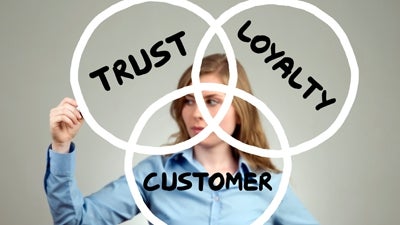Home > Run and Grow > Customer Service >
Share of Wallet May Be the Best Loyalty Yardstick
By: Bill Bleuel

Tim Keiningham, global chief strategy officer for Ipsos Loyalty has developed an interesting statistics regarding loyalty. Many companies rely on the NPS measurement to define their customer loyalty. However, Mr. Cunningham has some statistics that seem to provide some serious questions about the NPS measurement of loyalty. In effect, a report for a client with customers right in a five as loyal with the NPS criterion. However, more than 90% of the time the same customers had an NPS loyal score for another brand.
There is an interesting new book titled the wallet. How location rule which was co-written by Prof. Lerzan Aksoy and Mr. Luke Williams also of Ipsos. In this new book the authors give an example regarding a retail grocery chain. The authors note that while 53% of the customers gave high marks when asked would they would promote the store, only 43% listed the store as their primary shopping location. The authors point out that 57% of the customers with a solid satisfaction score still prefer competitors. It was further pointed out that customers often chose to shop elsewhere due to lower prices and one of the other stores had a location that was more convenient.
Related Article: Loyalty Is Not Black and White
Rather than using the NPS score estimator of loyalty, the authors offer three performance indicators that may provide a better measure of loyalty. The authors suggest the following three metrics:
- Measure the percentage of customers that list them as their first choice
- The average number of brands used by the customer
- The share of the customer’s wallet captured by the company.
Dr. Keiningham references another study of a financial services firm that found 90% of the customers who would indicate they would promote a brand might not list it as their primary brand in the field.
The bottom line is that customer loyalty identified as a 9 or 10 on the NPS scale may not accurately reflect loyalty according to the following definition. Many companies believe loyalty means that their company will be considered first when an engagement opportunity occurs (the customer will spend his money with the company because they are loyal). Based on these statistics, that may not be true.
This article was originally published by The Customer Institute
Published: March 19, 2015
4892 Views
4892 Views












